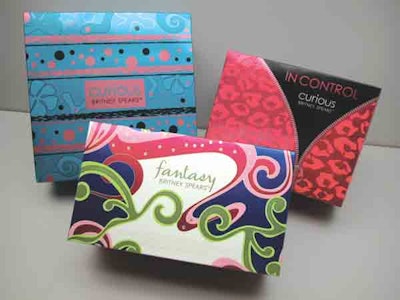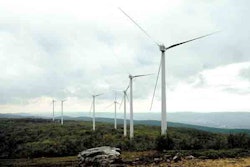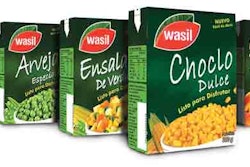“At Curtis, we ask two questions that are fundamental to sustainable practices,” says Droppo. “Can we reduce the product-to-package ratio? Can we use more environmentally friendly coatings and substrates?” For the Modern Friction brand of dermabrasion health and beauty aides from Origins Natural Resources, Inc., Curtis worked with Mohawk Fine Papers (www.mohawkpapers.com) to create an environmentally sound .018 pt. board that is 100 percent recycled, composed of 50 percent post-consumer waste, and made with wind power.
For Elizabeth Arden packaging, Curtis applied its CurtCHROME coating, an environmentally safe and recyclable alternative to non-recyclable metal foil bonded to a paper substrate. “Our emphasis on sustainable practices is helping us win new customers and expand into fast-growing market segments such as organic products,” says Droppo.
Design, recovery, reuse, and inspiration at Coca-Cola
In 1969, The Coca-Cola Company commissioned the industry’s first packaging lifecycle assessment. The company continues to build on that heritage today. “We are dedicated to the fact that efficiency and profitability go hand-in-hand with eliminating waste and improving the environmental performance of our packaging,” says Scott Vitters, director of sustainable packaging, Coca-Cola.
Environmental considerations are integrated into the company’s stages-and-gates based packaging development process. In the design stage, for example, the company has made significant advances in the efficiency of its packaging. Vitters said that 8-oz glass bottles are overall 57 percent lighter than when introduced, 12-oz aluminum cans 33 percent lighter, and 2-L PET bottles 32 percent lighter.
Coca-Cola’s Ultra-Glass bottle, which holds the same amount of product as earlier glass containers, is 20 percent lighter, 50 percent stronger, and 14 percent more efficient to manufacture. This stronger, lighter bottle improves consumer satisfaction. In 2005, this design breakthrough reduced glass use by 52,000 metric tons globally and cut nearly 30 tons of C02 emissions—the equivalent of removing nearly 6,000 cars from the road.
A redesign of the company’s Dasani bottle (shown left) reduced PET use by about 10,000 metric tons in 2005. This was an equivalent savings of nearly 400 million 20 oz. Coca-Cola bottles. Because environmental concerns overlay every aspect of packaging during its life cycle, the company identified early on that the original dark-blue design of the Dasani bottle would lower its recovery value. A light-blue color was selected instead so that the bottle would be able to enter the clear PET recycling stream. “We work to ensure our packages have a high recovery value, which helps pull them into recycling centers,” says Vitters.
In terms of reuse, the life-cycle stage after recovery, the company focuses on sustainable practices for refilling and on the reuse of recovered materials such as PET, aluminum, and glass. For more than a decade, The Coca-Cola Company has invested in developing sustainable technologies for reusing PET. Additionally, the company is investing in bottle-to-bottle manufacturing facilities and is using recycled PET in nearly 20 markets.
Coca-Cola is also actively promoting the reuse of PET for non-beverage applications, and this promotion is one aspect of the company’s campaign to inspire sustainable practices. “Design, recovery, reuse, and inspiration are connected in a life-cycle approach to everything we do in packaging,” says Vitters.
Program streamlines packaging operations and provides measurable sustainability benefits
A. O. Smith Water Products Company is an industry leading manufacturer of water heaters. The company recently worked with Georgia Pacific to improve its packaging operations with the goals of lowering supply chain costs and achieving greater environmental sustainability in its packaging. The Georgia-Pacific team utilized the company’s Packaging System Optimization program to achieve an effective redesign of the locator base—the foundation of the box which secures the water heater in the shipping container. The team also streamlined A. O. Smith’s assembly process by eliminating the need to fold locators.
The redesign reduced the amount of corrugated used to form the locator by one-third. This cost savings was partially reinvested into plastic clips used to keep the water heater firmly in place. Now the box flaps fit tighter to the locators, protecting product from damage during transit. With a smaller footprint, the corrugated carton is easier to store in the warehouse and allows for a greater number to be placed on each truck for improved cube utilization and lower overall transportation costs. This savings is linked to sustainability improvements, including a 529-ton fiber reduction, a 1,423-ton decrease of greenhouse gas emissions, and a 12,492MM BTU usage cut.
“We are now delivering our customers quality products in improved packaging that provides a sustainability advantage,” says Brian Welte, Advanced Buyer Division Purchasing at A. O. Smith Water Products Company.

























